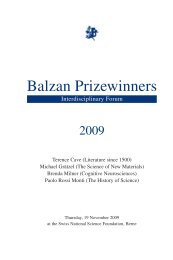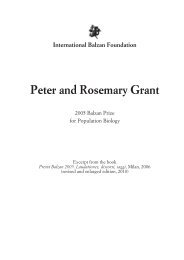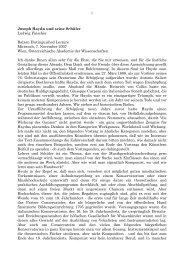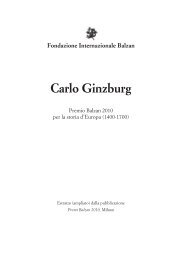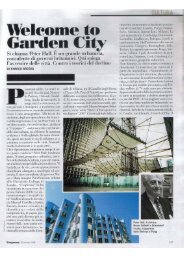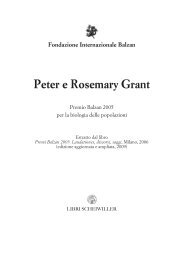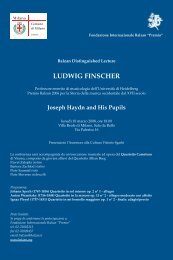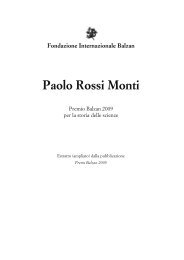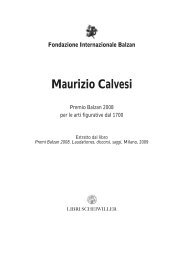Russell J. Hemley and Ho-kwang Mao
Russell J. Hemley and Ho-kwang Mao
Russell J. Hemley and Ho-kwang Mao
You also want an ePaper? Increase the reach of your titles
YUMPU automatically turns print PDFs into web optimized ePapers that Google loves.
2005 Balzan Prize<br />
theoretical chemistry at Harvard <strong>and</strong> continued it at Carnegie in the mid 1980s.<br />
The theoretical work was then combined with – <strong>and</strong> helped drive – an experimental<br />
program with <strong>Mao</strong> that included the first spectroscopy measurements on<br />
silicate perovskite under pressure [Silicate Perovskite, (1989), p. 35] <strong>and</strong> the first<br />
measurement of the crucial pressure-volume-temperature equation of state in the<br />
1990s [J. Geophys. Res. 96, 8069 (1991)], then one of the most important problems<br />
in mineral physics. The work culminated in a model for the Earth’s interior<br />
involving weak compositional changes with depth <strong>and</strong> stratification of the upper<br />
<strong>and</strong> lower mantle [Science 257, 1099 (1992)]. The new level of underst<strong>and</strong>ing<br />
of silicate perovskite was summarized in a review written with Ronald E. Cohen<br />
[Ann. Rev. Earth Planet. Sci. 20, 553 (1992)]. Subsequent study of the element<br />
partitioning indicated a change in iron composition with depth within the<br />
lower mantle [Science 278, 2098 (1997)].<br />
Most recently, the team has focused attention on the so-called post-perovskite<br />
phase of (Mg,Fe)SiO 3 [Proc. Nat. Aca. Sci. 101, 15867 (2004)]. This new phase<br />
was identified near 1 Mbar in experiments carried out in Tokyo by Kei Hirose<br />
using high pressure-temperature techniques the latter brought to Japan after a<br />
post-doctoral fellowship in their lab in the late 1990s. The Carnegie team discovered<br />
that the material has a very wide range of stability <strong>and</strong> can contain significant<br />
amounts of Fe. The observations are particularly important because the<br />
material is thus the “inner liner” of the silicate portion of the planet in contact<br />
with the hot dense fluid core. The physical <strong>and</strong> chemical properties also resolve<br />
a number of paradoxes regarding seismic anomalies in Birch’s D” region <strong>and</strong> the<br />
core-mantle boundary. These observations have changed our views of the deep<br />
mantle, especially the core-mantle boundary region.<br />
Transformations in Silica<br />
Early on in their collaboration, <strong>Hemley</strong> <strong>and</strong> <strong>Mao</strong> focused on the high-pressure<br />
polymorphism <strong>and</strong> phase diagram of SiO 2, a system central not only to high-pressure<br />
mineralogy but also to condensed-matter physics <strong>and</strong> materials science. The<br />
modern experimental era of mineral physics began with the synthesis of stishovite<br />
in 1961 by Sergei M. Stishov <strong>and</strong> Svetlana V. Popova, 30 <strong>and</strong> its subsequent discovery<br />
in nature at Meteor Crater, Arizona, by Edward C.T. Chao <strong>and</strong> co-workers.<br />
31 Influenced by James B. Thompson’s suggestion that silica should transform<br />
to the much denser structure of rutile in the Earth’s mantle (see Ref. 4 ), as a young<br />
16



